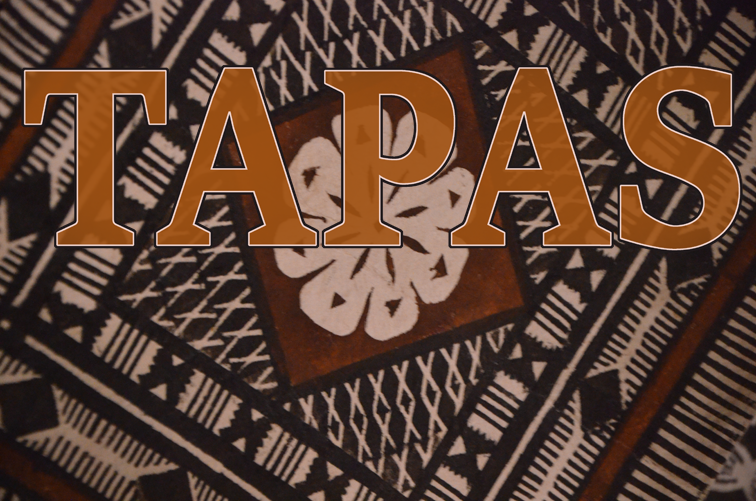Sometimes I come across food that I have to talk about, but most of it can’t be eaten. Well, not by me anyway. And, if you’ve ever munched at a tapas bar, you might think that is the subject of this blog. You would be wrong. This time, I’m not writing anything about food. I have to tell you about the tapas in Fiji. It’s a traditional fabric made from the bark of mulberry trees. And, I must confess, I only saw the word "tapa". I don't know if the plural actually has an "s".
Now, I read that the people from Tahiti make tapa, in Tonga they make ngatu, in Samoa they make siapo and Fiji they make a cloth called masi. Well, I would like to say, don’t believe everything you read on the Internet. But, I really don't know what to say. I asked several different merchants about this. Nobody ever called the Fiji cloth “masi”. Everyone, one hundred percent of the time, every single person called the cloth that they sell from Fiji a tapa. And, even the cloth in Fiji is labeled "tapa". However, the best website I found on the subject clearly said it was actually masi and my contact at the embassy did as well. You may be informed and correct if you say "masi", but everyone will know what you're talking about if you say "tapa". End of discussion.
Tapa cloth was the original cloth made in the area. It is still used today to bring a newborn home from the hospital, to gown both a bride and groom, to honor a departed family member or celebrate any other big occasion in one’s life. And, what makes tapa unique is the geometric motifs that are used to decorate the fabric. Those who read and understand the motifs can identify the person who created the tapa and tell what part of the country they are from.
The more I learned, the more fascinated it was. The fabric is made from the inner bark of the mulberry tree (also called the masi tree). The outer bark is not needed. To get to the useful inner bark, women traditionally used their teeth and then knives to remove the bark. I’ve had jobs that left a bad taste in my mouth, but never actually a bad taste!
It’s the soft inner core of the tree that is pounded and beaten into tapa fabric. Really good quality of tapa has four layers of cloth pounded and beaten together to make a stronger, thicker, longer lasting fabric.
Modern technology has replaced some of the traditional steps. Knifes have replaced sharpened sea shells. Plastic bowl have reduced the need for wooden bowls. And, banana leaf stencils, which could only be used once, have been replaced by ever-durable X-rays.
If by now, you still crave a cerveza and munchies at your favorite cantina, you just are not an art lover. Go read another blog. And, there’s no use of ever expecting an invitation to my home. The only tapa you’ll ever find in my home will be hanging on a wall with other mural memorabilia. Nobody can taste it, but I will certainly savor the experience.
As an added bonus, the folktale that I located from Fiji concerns tapa cloth and an additional use not mentioned above. Check soon for the link. I’ll place it here when I’m ready to post “Little Friends”.


 RSS Feed
RSS Feed